BATMAN WEEK: They weren’t always going for the jokes…
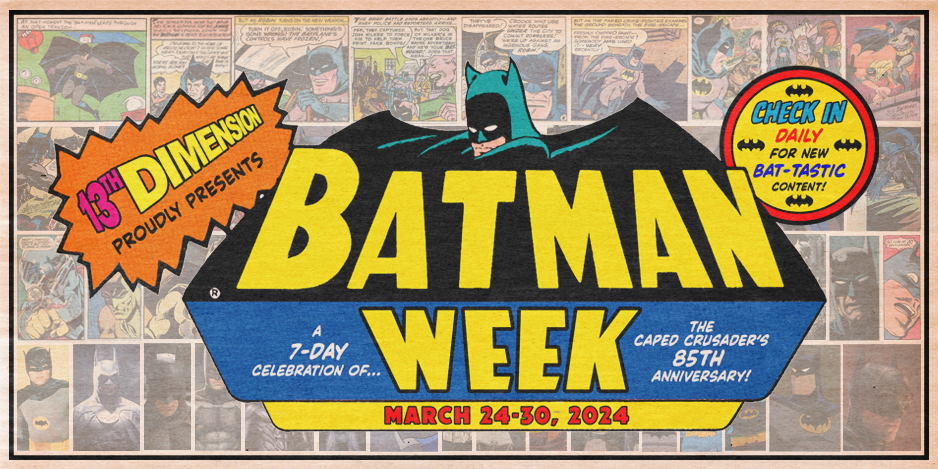
—
Welcome to BATMAN WEEK 2024 — celebrating the 85th anniversary of the release of Detective Comics #27, on March 30, 1939. Over seven days, you can look forward to all sorts of groovy and offbeat columns, features and cartoons that pay tribute to the greatest comics character in the history of mankind. Click here for the rest of the BATMAN WEEK features. You’ll be glad you did! — Dan
—
By MARK S. REINHART
Like most Batman fans who were born in the 1960s and 1970s, I first became a fan of the character after seeing the 1966 TV series and film starring Adam West in the title role. This screen version of the character led us fans to all of the amazing Batman comics created by a host of incredibly talented writers and artists, comics that have spanned the pre-World War II era all the way up until the present day.
The Batman TV series and film might have initially brought a huge number of fans like me to the Caped Crusader – but honestly, many of us really didn’t continue to hold its version of the character in very high regard. As Batman evolved and became ever more nuanced over the decades, both in print and on the screen, the 1960s TV Batman was increasingly looked down upon by the majority of us now “serious” fans. The straight-up camp silliness of West’s Batman was seen as basically a step backward in the character’s history. This version of Batman wasn’t really “Batman,” the dark, mysterious action hero found in Bob Kane and Bill Finger’s first stories.
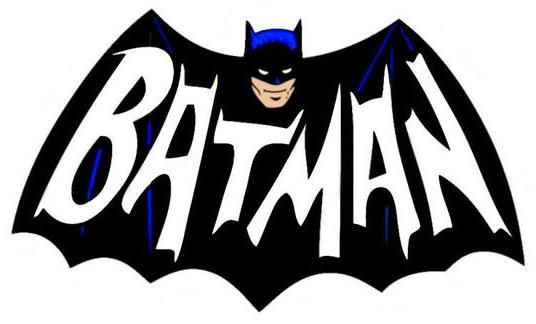
But for me, a strange thing happened once the Batman TV series was finally released on home video in 2014. As I went through the series for the very first time as an adult, I was pleasantly surprised to find that a number of its early episodes were far less campy than the series as a whole would turn out to be. In these particular episodes, Batman was a determined, at times grim, crimefighter that came across much like the character that Kane and Finger had originally created. So these episodes of Batman DID really seem like, well, “Batman” to me!
This realization led me to start saving screen grabs of Batman scenes that presented the character in his purest action hero form. At first I wasn’t sure just what I was ever going to do with these screen grabs – but I sure know what I’m doing with them now. I’m using them to take all of you on a tour of 13 moments when I feel like Batman really WAS “Batman!”
—
The opening scenes of every episode of the series. What could be more “Batman” than the Caped Crusaders racing down to the Batcave, and then speeding off in the Batmobile to take on their latest case?
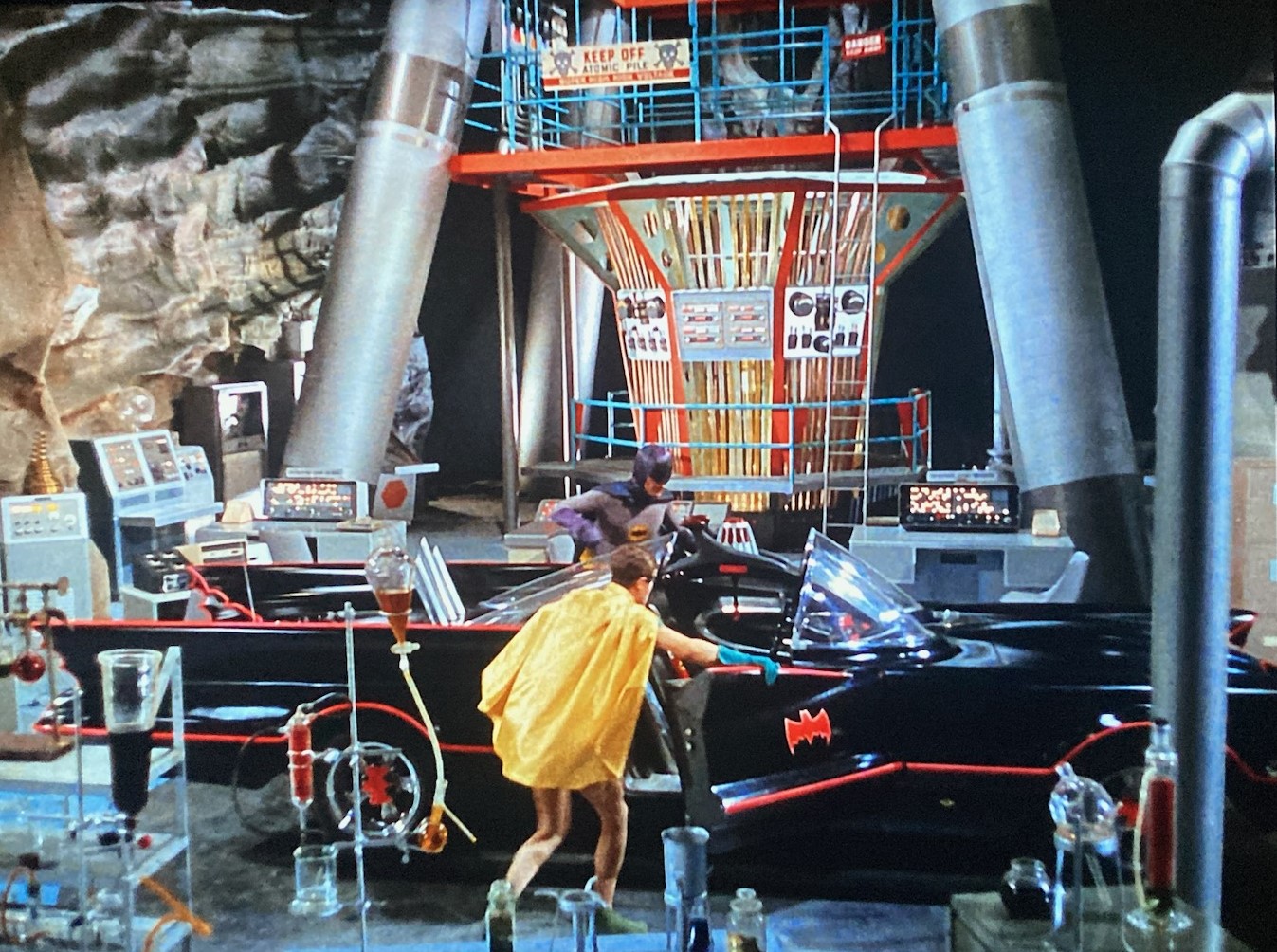
—
Smack in the Middle. Batman is in pursuit of the Riddler. The gas mask-wearing hero is leaping into a gaping hole in the floor that was caused by an explosion set by the villain. This was the first image from the series that I saved – I was struck by how much this scene’s Batman in action looked like a classic Batman comic panel.

—
The Joker Is Wild. Batman and Robin are nearly unmasked by the Joker after being momentarily grabbed by the villain’s henchmen. The heroes are engaging the villain while he hijacks a live TV performance of the opera Pagliacci – that is why Joker is wearing a white Pierrot clown costume. I think that this image is very much in the dramatic style and spirit of the amazing Norm Saunders paintings used for the 1966 Topps Batman trading card set, inspired by the series.
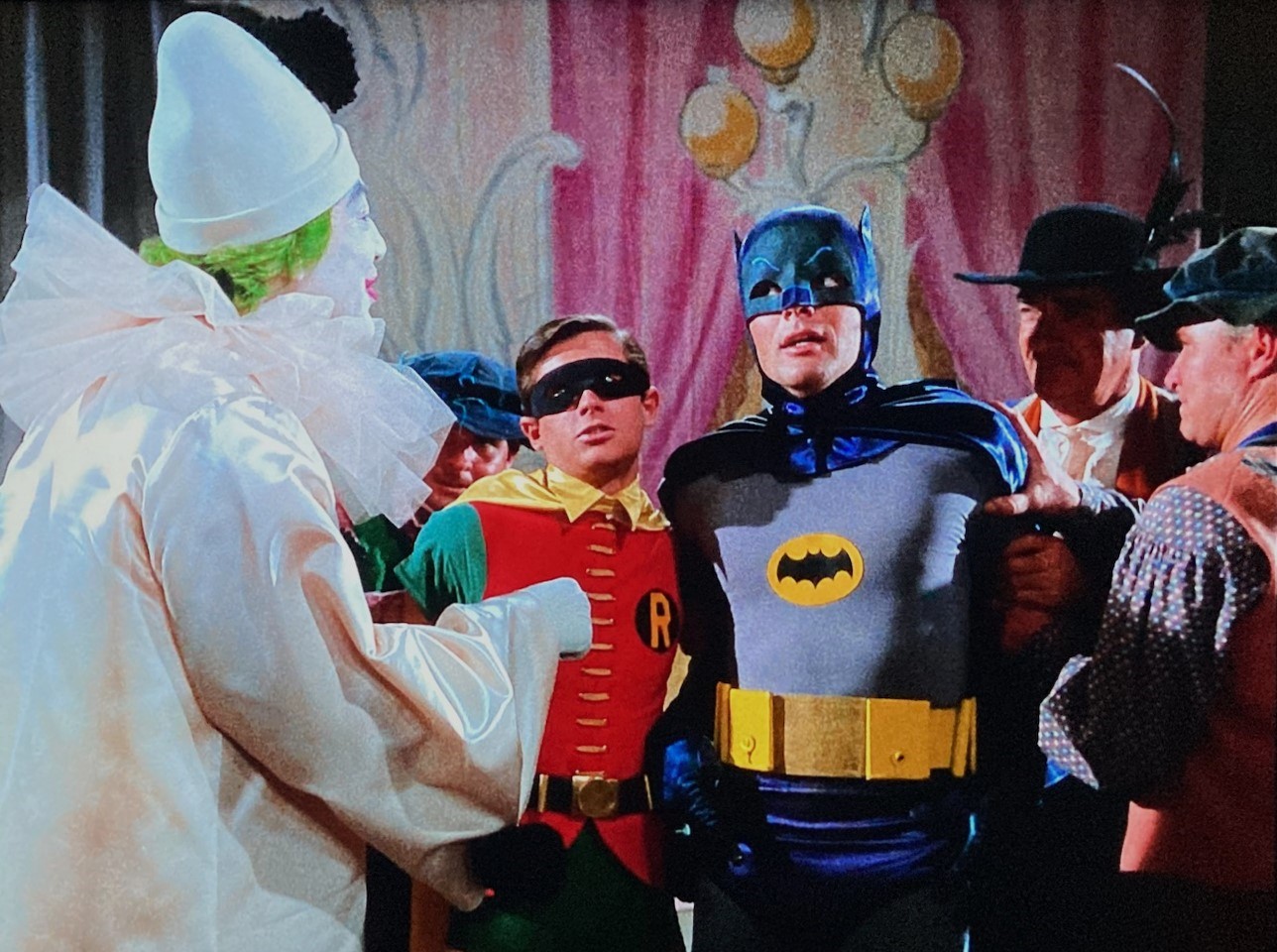
—
Batman is Riled. In this follow-up episode to The Joker Is Wild, Joker hijacks another TV program and uses a powerful joy buzzer to knock out its host. The Joker’s menacing use of pirate media and practical jokes in these episodes is very much in keeping with the villain’s most well-known tactics that date all the way back to the 1940s.
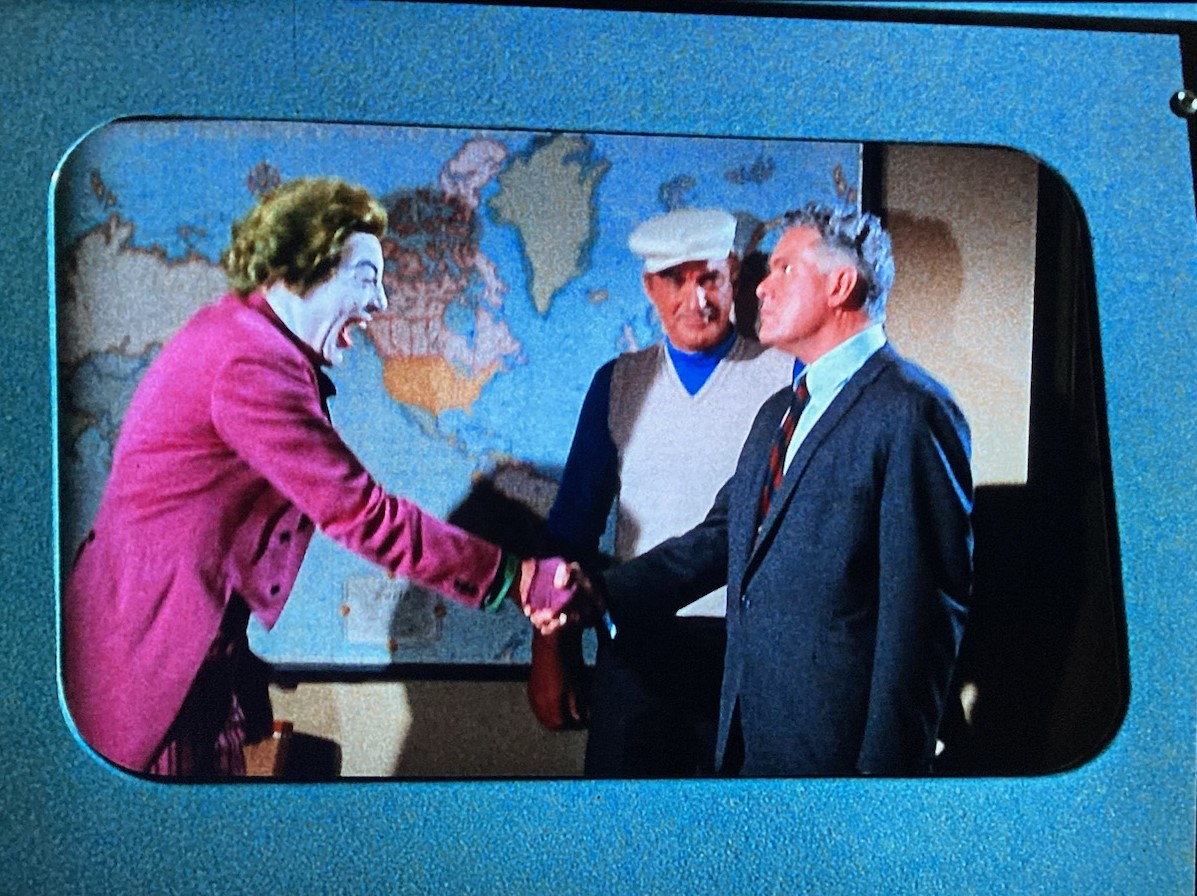
—
A Riddle a Day Keeps the Riddler Away. In the first image from this episode, Batman and Robin prepare to climb the Batrope up an old water processing plant to confront the Riddler, who is hiding a kidnapped foreign dignitary inside. Early episodes of the series featured a number of dramatically lit night scenes like this one.
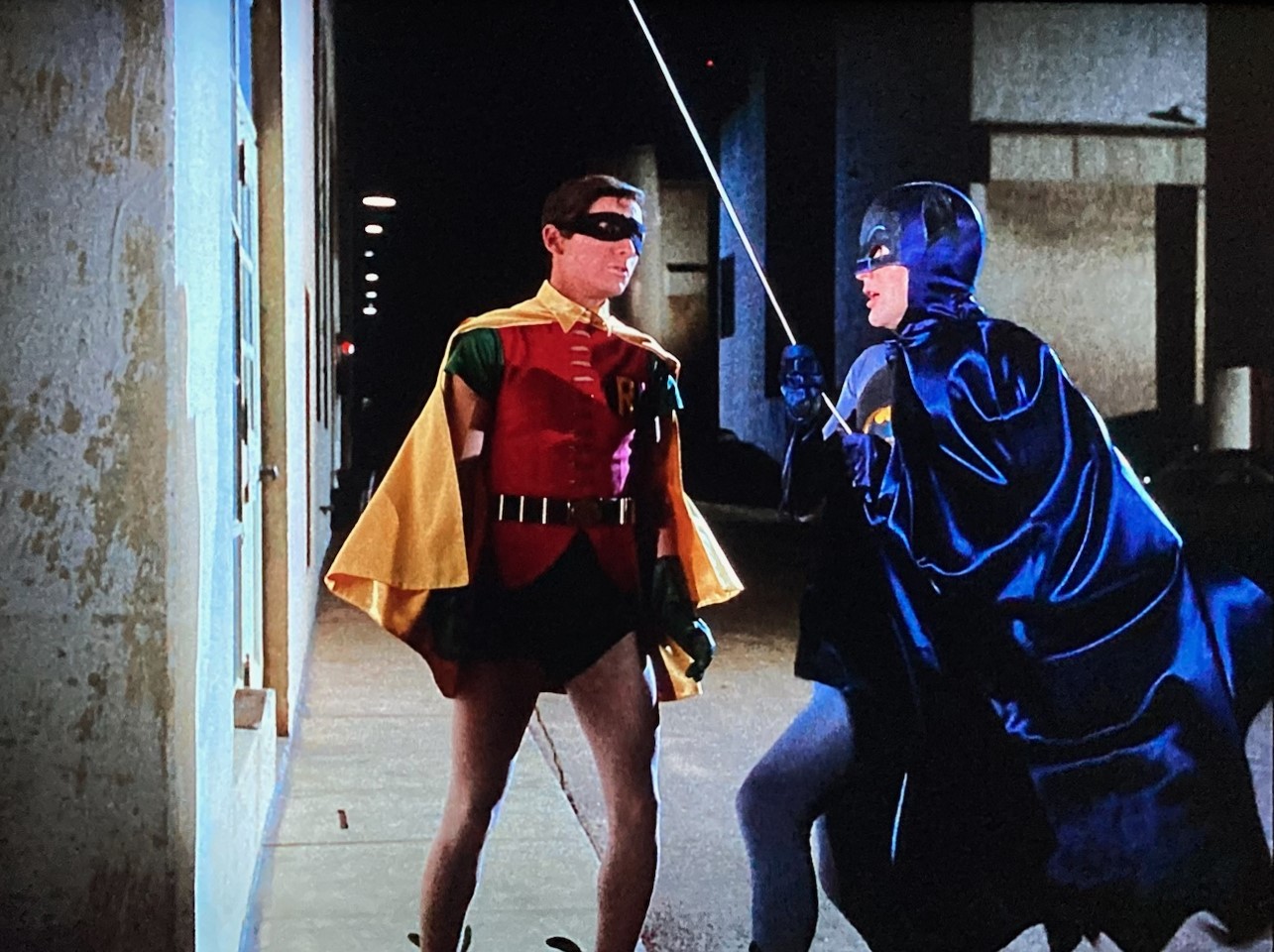
And in the second image, the heroes prepare to take on the Riddler after entering the plant. Note the henchman on the left of the image, who is preparing to ambush the heroes. This is another image that looks a lot like a Norm Saunders painting to me.
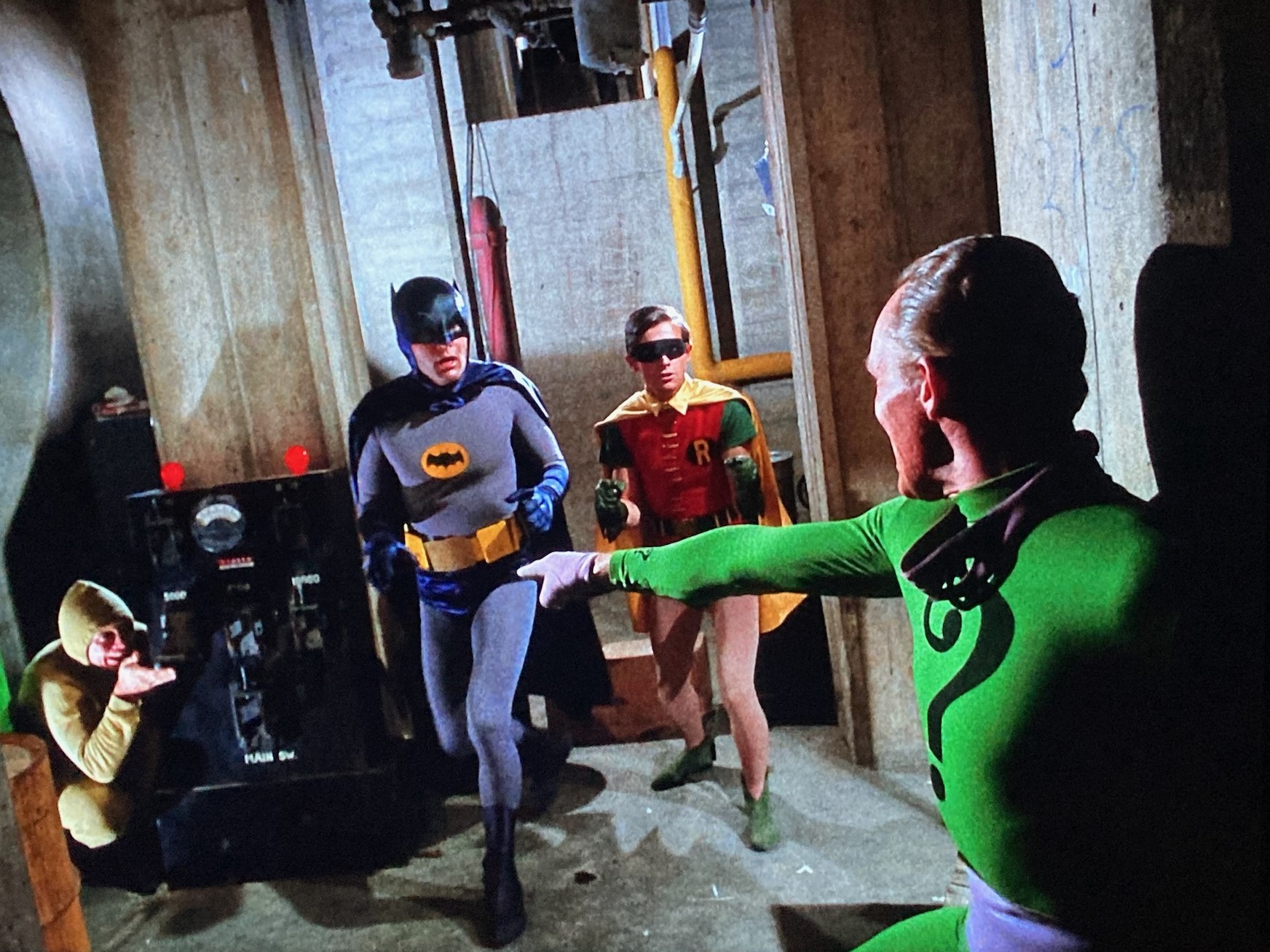
—
The Purr-fect Crime. In this image, Batman is about to confront Catwoman at the Gotham Museum while she is stealing a priceless golden cat statuette that is being displayed there. The Purr-fect Crime and its follow-up Better Luck Next Time are considered by many fans of the Batman TV series to be its all-time best episodes. I very much agree with this assessment. These episodes are filled adventure, peril, and death traps – and they have no shortage of dark scenes that take place at night, in dimly lit rooms, or in caves.
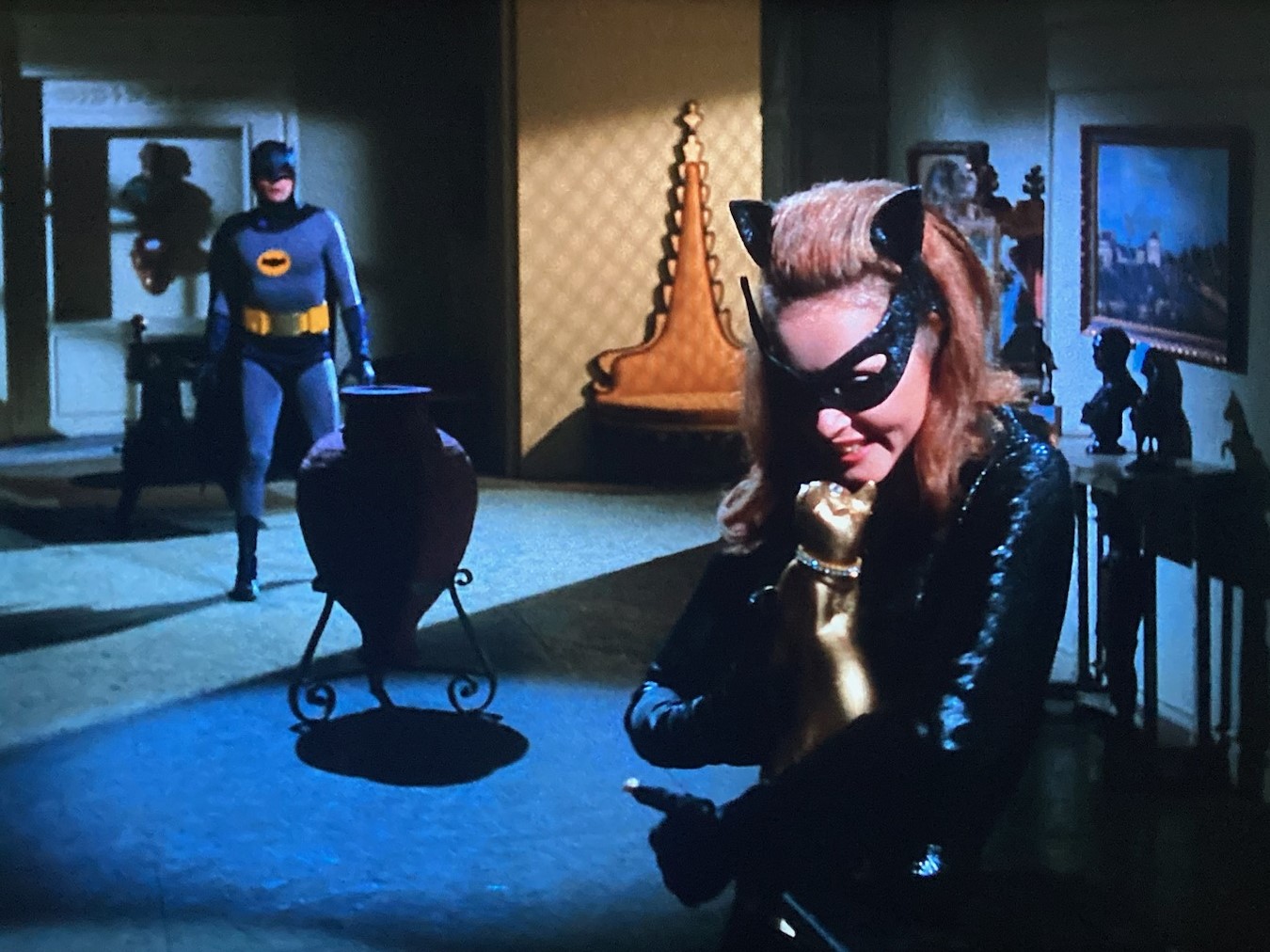
—
Better Luck Next Time. In this image, Batman makes his way through the catacombs of Catwoman’s hideout after narrowly escaping an attack from her man-eating tiger. As far as I’m concerned, West’s Batman at this moment is every bit as much “Batman” as actors such as Keaton, Bale, or Pattinson would ever be!
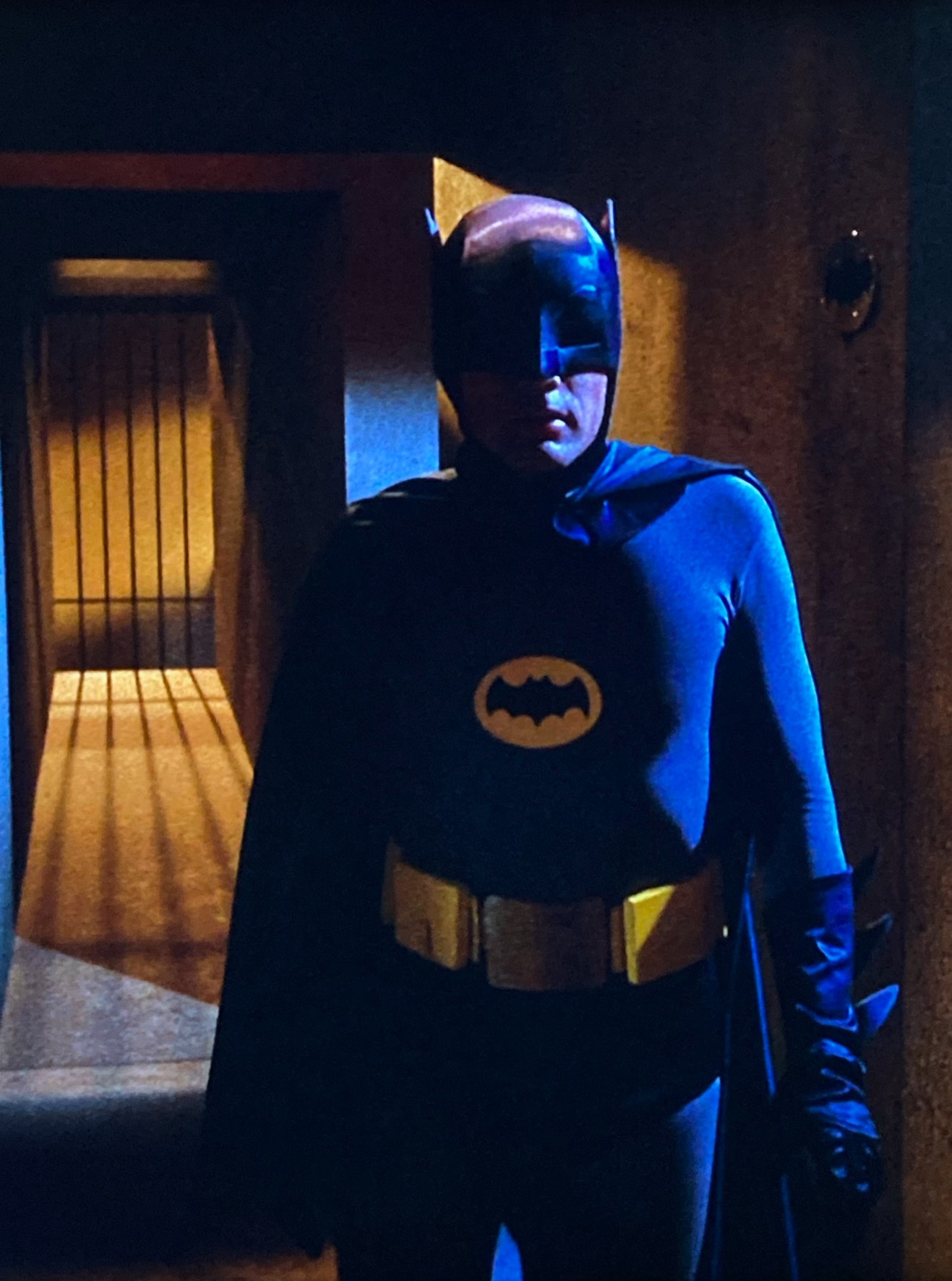
—
The Penguin Goes Straight. In this image, Batman and Robin are seen in shadow, using their disguises to strike fear into the heart of a Penguin henchman who is being interrogated by Commissioner Gordon and Chief O’Hara. Fleeing from what he thinks are loose bats in the interrogation room, the terrified henchman jumps out of his chair, runs into a wall, and knocks himself out cold.
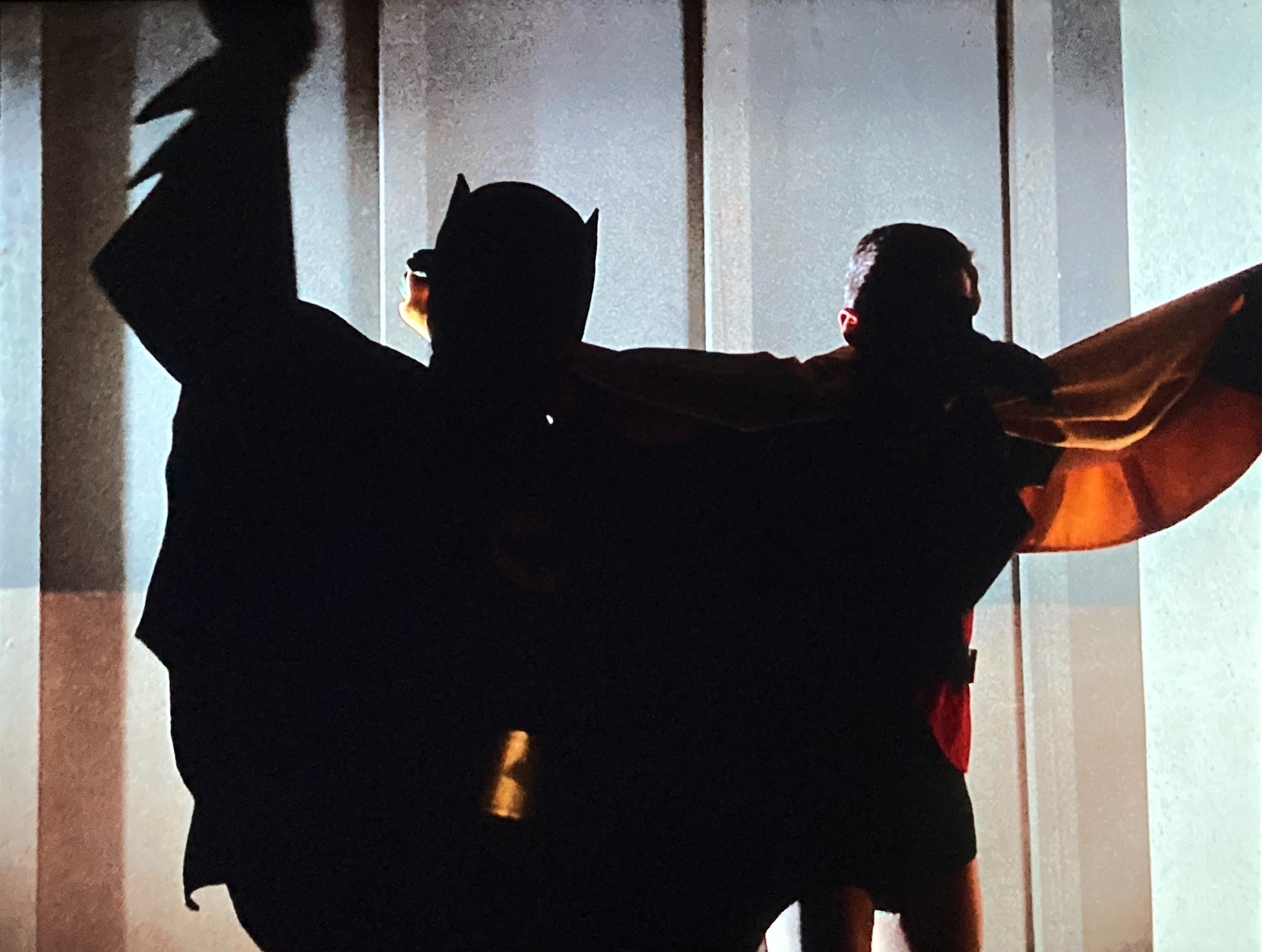
—
Give ’Em the Axe. In these images, Batman is again seen in shadow, using his cape to cast a bat silhouette when confronting the Riddler and his gang.
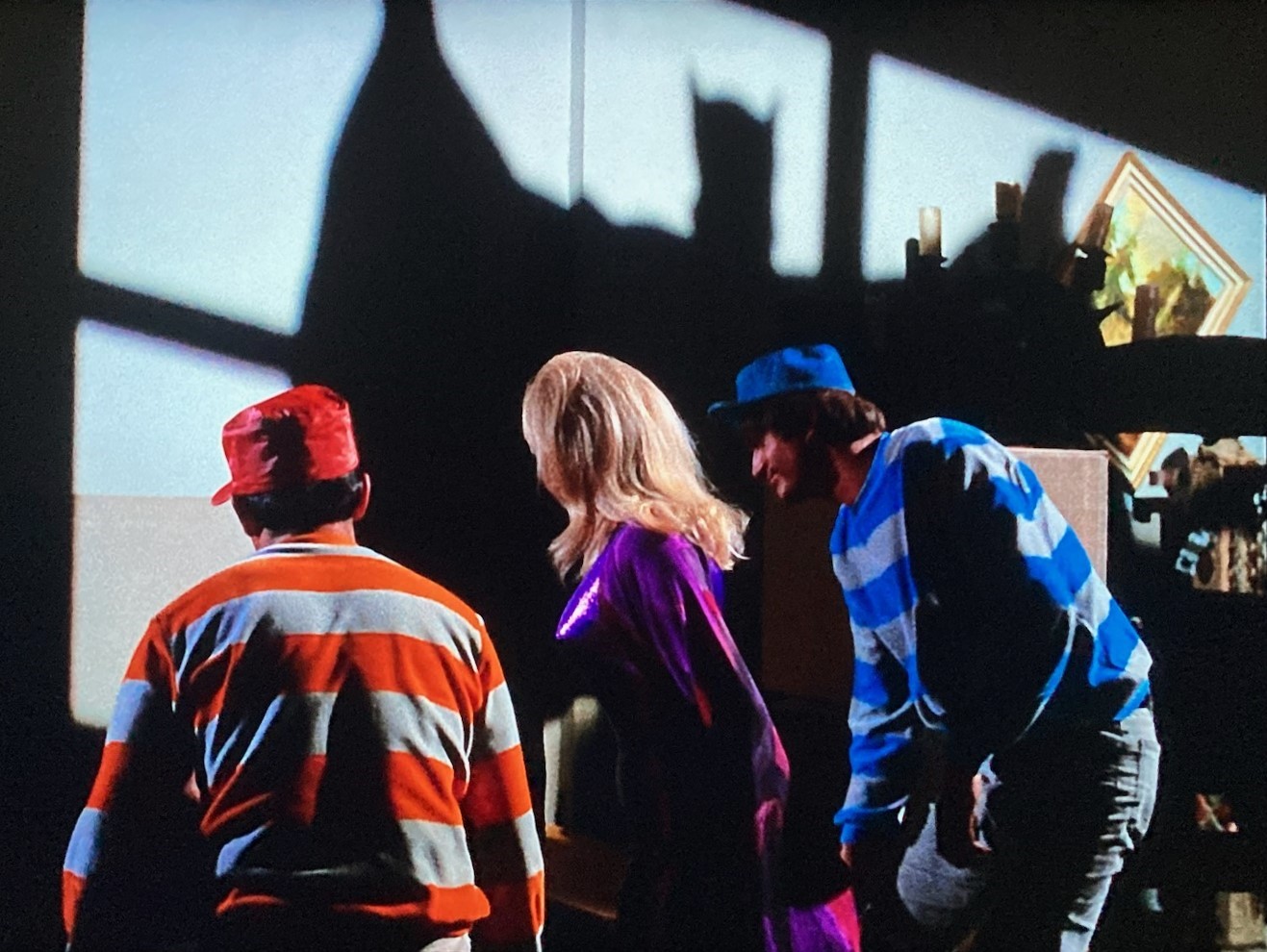
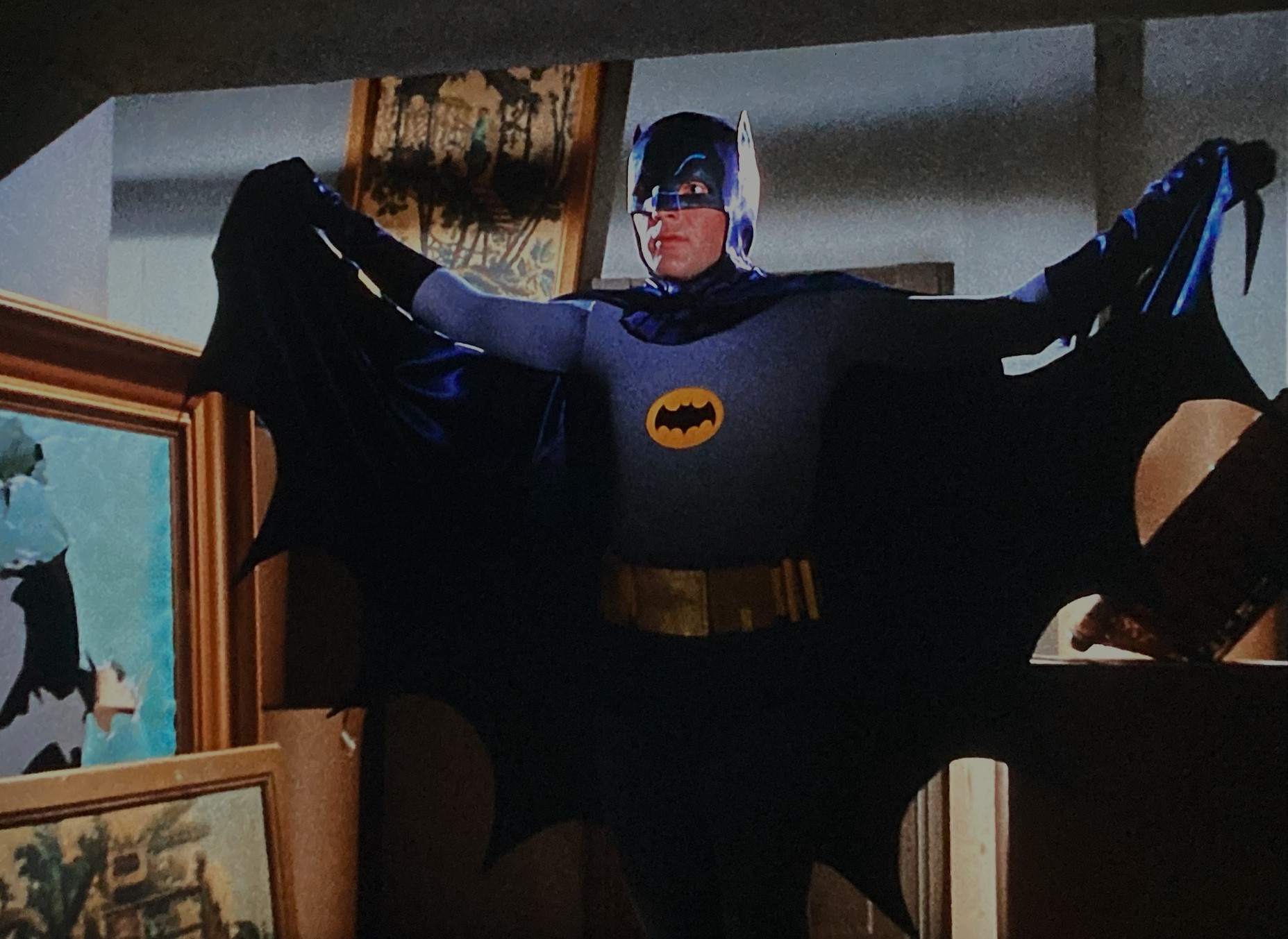
Incidentally, the silhouette seen in the first image is not really West’s. The series constructed a cutout that would project this silhouette when placed in front of a bright light. The cutout was first used in the Joker episode He Meets His Match, the Grisly Ghoul.
—
The Penguin’s Nest. In the first image from this episode, we see the Penguin cocking his umbrella gun, preparing to shoot one of his henchmen.
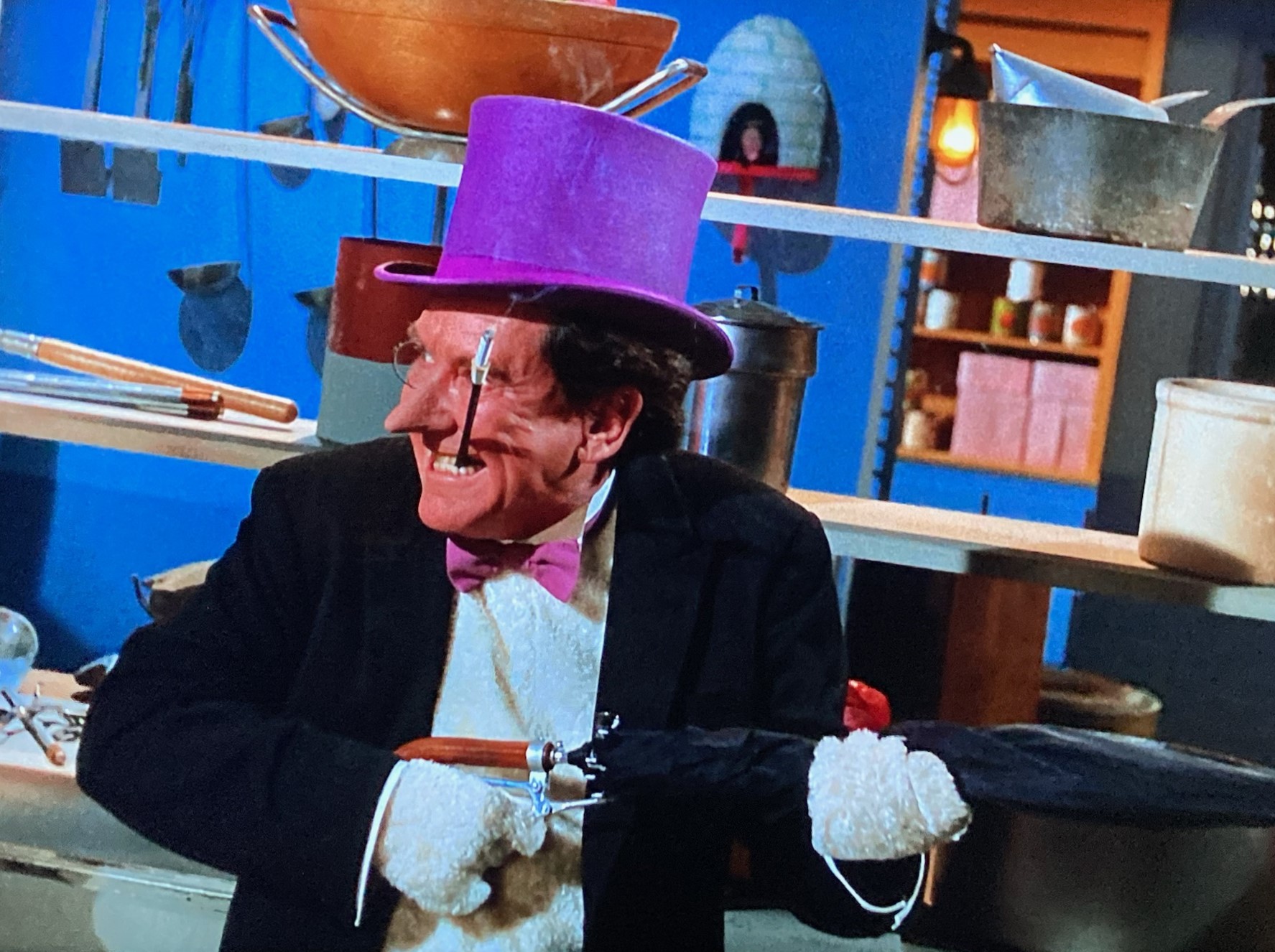
In the second image, Batman and Robin listen in on the villain’s plans from a window ledge outside the room where he is standing. It turns out that the Penguin’s weapon is loaded with blanks when he shoots his henchman – but for a moment, the heroes think that the villain has committed a murder.
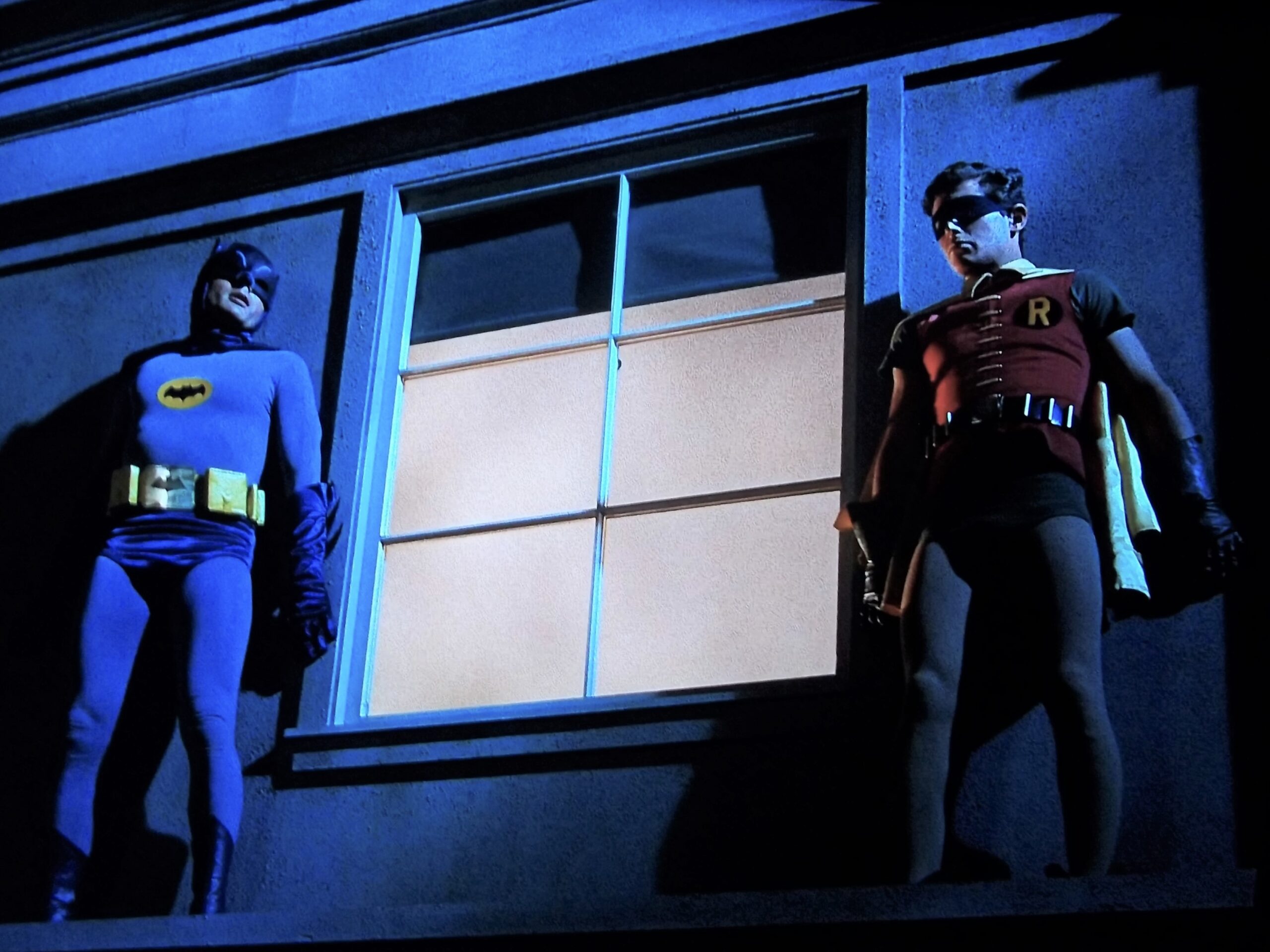
(It should be noted that this is the only episode in this article that is from Batman’s second season, not the first. But The Penguin’s Nest/The Bird’s Last Jest were the very first second-season episodes to be filmed, so they are very similar in content and tone to the first-season episodes.)
—
So there you have it – some scenes from early episodes of the 1960s Batman TV series presenting Batman in all of his original comics glory! What makes these episodes so good is that they generally put every bit as much emphasis on action as they do comedy. And even better, the comedy found in them is nowhere near as outlandish or as labored as the comedy found in other episodes of the series.
On the whole, the 1960s Batman TV show and film will be most remembered for its over-the-top campiness, and that is an accurate assessment. But even still, I strongly believe that there were at least a few of its episodes that gave us a view of “Batman,” a version of the character not all that far removed from Bob Kane and Bill Finger’s shadowy action hero. So as far as I’m concerned, some these episodes very much belong on the list of the greatest Batman works of all time.
—
MORE
— The BATMAN WEEK 2024 INDEX! Click here.
— Dig These 13 Celebs Grooving With the 1966 BATMOBILE. Click here.
—
Mark S. Reinhart is the author of The Batman Filmography.

March 29, 2024
While researching material for this episode, did you happen to find any common thread in terms of writer or director? Budget is almost always blamed once we get to season #3. But, I wonder about these earlier gems.
March 31, 2024
I can’t speak for the writer of this article, Mark Reinhart, but I can tell you that Lorenzo Semple Jr. was the story editor and that may be the connective tissue.
March 31, 2024
Buck and Dan, I must say that I really don’t have any insight regarding why the series continued to wade deeper and deeper into the waters of campy comedy as it continued through its 3 seasons. I personally think that the comedy aspects of the series were such a huge hit with audiences that its creators simply kept trying to do the same campy things that had worked in the past – and repeatedly turning to that formula led to the show’s comedy becoming ever more broad and forced. The smaller budget that the series had in its third season definitely didn’t help the series’ chance of continuing on longer. But it seems to me that the series’ bigger problem was its reliance on a formula that its audiences were growing tired of because they had seen it too many times.
April 1, 2024
That sums it up, Mark!
April 4, 2024
After the first season Semple stepped down as story editor and his place was taken by Charles Hoffman. Semple contributed a couple scripts to the second season but he was no longer in a position to edit and rewrite scripts. Without Semple as a de facto showrunner the program lost its ties to the comics (most of Semple’s episodes were based on comics stories).
Another factor was that after its first episodes were acclaimed as camp the show tried too hard to live up to the label. And network demands resulted in the crew having to crank out lots of rushed episodes for the second season. Lastly, producer William Dozier was happy to keep relying on the same formula until he’d produced enough episodes for syndication. In a way, Batman 66 became like the Elvis films of the same era. They started good but degenerated into factory products.
April 4, 2024
All that.
March 29, 2024
RE: The Purr-fect Crime and its follow-up Better Luck Next Time are considered by many fans of the Batman TV series to be its all-time best episodes. I very much agree with this assessment. These episodes are filled adventure, peril, and death traps – and they have no shortage of dark scenes that take place at night, in dimly lit rooms, or in caves.
Added to that best-ness, the episodes also feature a 5′ 11″ curvaceous Julie Newmar in a form-defining, skin-tight black catsuit to jaw-droppingly purr-fection.
March 29, 2024
Great list! You picked out some real noirish gems there. I personally don’t have to “justify” Batman ’66 in any way any more. To me, now, it’s just as much Batman as Kane/Finger O’Neil/Adams, Frank Miller, BTAS, Burton or Nolan. But it took me a while to get there, and I know other’s’ mileage may vary, beyond the 14 miles to Gotham!
The Catwoman intro episodes are also burned into my psyche from the View-Master reels set. What a perfect episode to select for such distinction!
March 30, 2024
Bruce Wayne (in an early episode) makes reference to being a witness to the murder of his parents. Now that’s dark!
March 30, 2024
False Face in “True or False Face/Holy Rat Race” was very menacing, creepy and dark. As a child watching this villain, I was actually worried for the caped crusaders!
I also love it when I catch that first Riddler arc and how serious it is.
March 31, 2024
The shot where False Face’s reflection appears in the candy machine that gassed Batman is a favorite of mine.
April 1, 2024
I thought Adam West always did a great job in scenes such as the one mentioned above when Bruce Wayne spoke of the murder of his parents. He made a dramatic moment fit into the lighter mood of the rest of such episodes, and transitioned to that light mood seemingly effortlessly, sometimes in a continuous take.
April 2, 2024
I’m so pleased to read all of these insightful comments in appreciation of West’s Batman! His portrayal was tongue-in-cheek a lot of the time, but he sure had quite a few wonderful “serious Batman” moments as well!